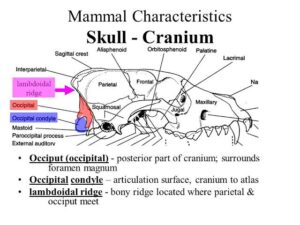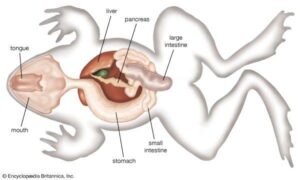Back to: ZOOLOGY 300 Level
WELCOME TO CLASS!
I’m really happy you’ve shown up for today’s lesson—it shows you’re serious about understanding how living things work, and I’m here to make it easy and exciting for you. Today, we’re going to talk about something very close to home—the organ systems in vertebrates.
Basic Vertebrate Organ Systems
If you’ve ever wondered how fish swim, how birds fly, how goats digest grass, or how your own body works, this lesson will bring everything together. Just like a well-organised market has sellers, buyers, security, and transporters all doing their part, your body (and the body of any vertebrate) is made up of organ systems—each one with a unique job but all working together to keep the animal alive and well.

Let’s break it down into the main systems every vertebrate shares.
- Circulatory System
This system works like Nigeria’s road network, carrying goods (in this case, blood) all over the body. At the centre is the heart, which pumps blood through a network of blood vessels. The blood carries oxygen, nutrients, and waste products.
In fish, the heart has two chambers and the blood flows in a single loop. But in mammals and birds, the heart has four chambers and pumps blood in a double circulation system—one loop to the lungs, one to the rest of the body. This helps maintain energy and keeps the organs well-fed.
- Respiratory System
Whether it’s a cat in Calabar or a cow in Kano, all vertebrates need to breathe. This system takes in oxygen and removes carbon dioxide. Fish use gills to extract oxygen from water, while land animals like reptiles, birds, and mammals use lungs.
Birds even have air sacs to help them breathe more efficiently during flight. Humans, of course, have a pair of lungs that inflate and deflate with each breath—something we often take for granted!
- Digestive System
This system breaks down food and absorbs nutrients. In all vertebrates, food passes through a mouth, oesophagus, stomach, intestines, and is finally expelled through the anus.

The structure of this system depends on diet. Herbivores like cows have multi-chambered stomachs to digest tough plants, while carnivores like lions have shorter guts because meat is easier to digest. Humans are omnivores, so we’ve got a digestive system suited for both plant and animal foods—like jollof rice and chicken.
- Excretory System
This system removes waste, especially nitrogenous waste from breaking down proteins. The kidneys play the starring role here, filtering blood and producing urine. Fish excrete ammonia directly into water, while birds and reptiles excrete uric acid. Mammals like us excrete urea through urine. All of this keeps the body balanced and healthy. - Nervous System
Think of this as the body’s electrical wiring. The brain and spinal cord make up the central nervous system, sending and receiving messages to every part of the body. This allows vertebrates to respond to their environment, feel pain or joy, and even remember experiences.
Birds use their sharp senses to hunt or avoid danger. Humans use theirs to learn, solve problems, and interact with others.
- Reproductive System
This system allows vertebrates to produce offspring. Most have separate sexes, and fertilisation can be external (like in many fish and amphibians) or internal (like in reptiles, birds, and mammals).

In mammals, development happens inside the mother’s body, while birds lay eggs with hard shells. In some reptiles and fish, eggs hatch inside the mother’s body—a combination of both strategies!
- Muscular and Skeletal Systems
These work together to allow movement. The muscles attach to the bones and contract to produce motion. Without this, fish couldn’t swim, snakes couldn’t slither, and humans couldn’t walk or dance at owambes!
Summary
- Vertebrates share basic organ systems: circulatory, respiratory, digestive, excretory, nervous, reproductive, muscular, and skeletal systems.
- Each system performs a key function and works with others to keep the body alive and functioning.
- The structure of these systems varies depending on the animal’s environment and lifestyle.
Evaluation
- What is the main function of the circulatory system in vertebrates?
- How do fish and mammals differ in how they breathe?
- Which organ system is responsible for removing nitrogenous waste?
- Why is the digestive system different in herbivores and carnivores?
- Name three systems that work together when you’re running.
You’ve just uncovered the secret inner workings of all vertebrate animals, including yourself. These organ systems are what allow every animal to live, grow, and respond to its world. Keep your curiosity sharp—we’ve got even more exciting things to learn next!
